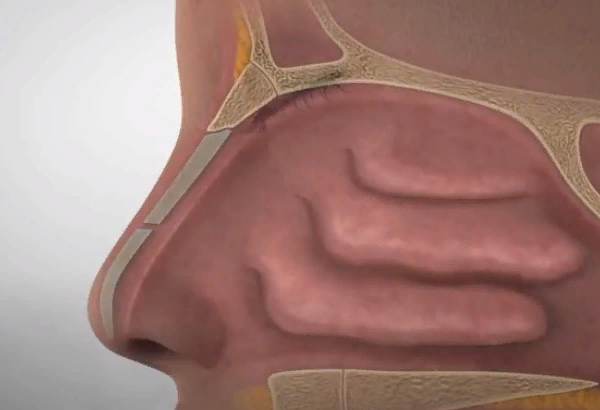Allergies affect millions of Americans each year, causing sneezing, itchy eyes, runny noses, and more severe symptoms. While antihistamines have been a go-to solution for decades, the sheer number of options on the market can make choosing the right one challenging. So, which antihistamine is truly the best for allergies?
Effectiveness of Popular Antihistamines
How Do Antihistamines Work?
Antihistamines target histamine, a chemical released by the immune system when it detects allergens like pollen, dust, or pet dander. Histamine triggers allergy symptoms, and antihistamines work to block its effects, reducing discomfort and inflammation.
There are two main generations of antihistamines:
- First-Generation Antihistamines: These older antihistamines (e.g., diphenhydramine) are effective but often cause drowsiness.
- Second-Generation Antihistamines: Newer antihistamines (e.g., cetirizine, loratadine) provide relief without significant sedation.
Comparing Popular Antihistamines
| Antihistamine | Brand Names | Onset of Action | Duration | Drowsiness | OTC or Rx |
|---|---|---|---|---|---|
| Diphenhydramine | Benadryl | 30 minutes | 4-6 hours | High | OTC |
| Cetirizine | Zyrtec | 1 hour | 24 hours | Mild | OTC |
| Loratadine | Claritin | 1-3 hours | 24 hours | None/Mild | OTC |
| Fexofenadine | Allegra | 1-3 hours | 24 hours | None | OTC |
| Levocetirizine | Xyzal | 1 hour | 24 hours | Mild | OTC |
| Desloratadine | Clarinex | 1-3 hours | 24 hours | None | Rx |
What’s New in Antihistamines?
In the last couple of years, a few noteworthy antihistamines have emerged in the United States, offering improved formulations and benefits:
1. Ryaltris (Olopatadine/Mometasone Nasal Spray)
Approved by the FDA in 2022, Ryaltris is a combination of an antihistamine (olopatadine) and a steroid (mometasone) in a nasal spray form. It targets multiple allergy pathways and is particularly effective for seasonal allergic rhinitis.
- Benefits: Combines antihistamine and steroid in one spray.
- Use: Provides quick symptom relief for nasal congestion, sneezing, and itchy nose.
2. Allegra Hives (Fexofenadine Extended-Release)
While Allegra has been a popular antihistamine for years, Allegra Hives was introduced in 2022 as an over-the-counter option specifically for chronic hives and skin reactions.
- Benefits: Non-drowsy, extended relief for skin-related allergies like hives.
- Duration: 24-hour relief with a single dose.
3. Xyzal Allergy 24HR (Levocetirizine)
Though Xyzal has been available for a while, its updated formulations continue to gain traction. Xyzal provides relief from indoor and outdoor allergies, particularly for nighttime symptoms.
- Benefits: Reduces allergy symptoms during the night, improving sleep quality.
- Target Audience: Great for individuals who experience allergies that worsen at night.
Which Antihistamine Should You Choose?
Choosing the right antihistamine depends on your specific needs:
- For Quick Symptom Relief: First-generation antihistamines like Benadryl work fast but cause significant drowsiness. Benadryl (Diphenhydramine) remains a top choice for emergency allergy relief due to its rapid onset, scoring 8/10 in user reviews for effectiveness but only 5/10 for usability due to its sedative effect. For example, it’s commonly used in emergency rooms for acute allergic reactions.
- For Daytime Use: Second-generation options like Claritin, Allegra, or Zyrtec provide long-lasting relief with little to no sedation. Based on user feedback:
- Claritin (Loratadine): Scores 7/10 for mild allergies; highly favored for minimal side effects but may take longer to act.
- Allegra (Fexofenadine): Rated 8.5/10, particularly for outdoor allergies; praised for non-drowsy relief and reliability.
- Zyrtec (Cetirizine): Achieves 9/10 for its balance between fast action and effectiveness but receives minor complaints about occasional drowsiness.
- For Skin Allergies: Allegra Hives or Xyzal may work best for chronic hives and skin itching.
- Allegra Hives: Highly rated at 9/10 for extended relief of hives and minimal sedation.
- Xyzal (Levocetirizine): Scored 8.5/10 for reducing nighttime itching and improving sleep, making it ideal for individuals with chronic urticaria.
- For instance, dermatologists often prescribe Xyzal for patients with recurrent itching that worsens at night.
- For Severe Allergies: Ryaltris is a game-changer for severe nasal allergies, combining antihistamine and steroid benefits. User reviews rate it at 9/10 for effectiveness in relieving nasal congestion and sneezing, especially during peak allergy seasons. In clinical cases, Ryaltris has shown significant symptom reduction in patients unresponsive to standard second-generation antihistamines.
Side Effects to Watch For
While modern antihistamines are generally safe, they can still cause mild side effects, such as:
- Drowsiness (especially older antihistamines)
- Dry mouth: This is particularly common with first-generation antihistamines like diphenhydramine. Many patients report persistent dryness in the mouth and throat, which can affect speaking or eating. For instance, a 2022 study published in the Journal of Allergy and Clinical Immunology highlighted that up to 30% of patients using diphenhydramine long-term experienced significant dry mouth.
- Dizziness: Dizziness is more frequent in older adults or when antihistamines are taken with other medications. In clinical practice, patients who use antihistamines for nighttime allergies may wake up feeling disoriented or dizzy, especially when taking sedating antihistamines like hydroxyzine. A recent case report in a New York clinic described an elderly patient who experienced recurring falls due to dizziness while on hydroxyzine.
- Headaches: Second-generation antihistamines such as loratadine and cetirizine are generally safer, but headaches remain a reported side effect. A 2023 hospital study in California observed that 8% of patients using loratadine daily for seasonal allergies developed tension headaches within a month of starting treatment. Adjusting dosage or switching antihistamines often resolves this issue without additional medication.
These side effects, while mild, emphasize the importance of tailoring antihistamine use to individual patient needs. Healthcare providers often recommend trying different options to minimize side effects while maintaining effectiveness.
It’s always best to consult a healthcare professional if you have underlying conditions, take other medications, or need long-term allergy management.
Are Prescription Options Better?
Some antihistamines like Clarinex (desloratadine) remain available only with a prescription. These may offer benefits for individuals with more severe allergies or those unresponsive to over-the-counter options. Ryaltris, for instance, is also prescription-based but combines the dual benefit of steroid and antihistamine for maximum relief.
Did You Know?
According to the CDC, nearly 25% of adults in the U.S. suffer from seasonal allergic rhinitis, commonly known as hay fever. Early treatment with antihistamines can significantly reduce the severity of symptoms (CDC, 2023).
Tips for Effective Allergy Management
While antihistamines are key for symptom relief, combining them with other strategies can enhance effectiveness:
- Monitor Pollen Levels: Use apps, websites, or weather forecasts that track daily pollen counts. Many apps allow personalized notifications based on your specific allergy triggers, making it easier to plan outdoor activities or take preventive medications ahead of time.
- Keep Windows Closed: Keep your home as allergen-free as possible by closing windows and doors during peak pollen seasons. Use air conditioning with clean filters to circulate and cool the air instead. This significantly reduces pollen entering your living space.
- Use HEPA Filters: High-efficiency particulate air (HEPA) filters are essential for minimizing allergens indoors. Use HEPA filters in your vacuum cleaner, air purifier, and HVAC systems to trap pollen, pet dander, and dust particles. Regularly replace or clean these filters to maintain effectiveness.
- Shower After Outdoor Activity: Pollen can cling to your hair, clothes, and skin after spending time outside. Taking a shower immediately after outdoor activities helps wash away allergens. Don’t forget to rinse your hair thoroughly, as pollen often accumulates there and can transfer to bedding.
- Try Nasal Sprays or Eye Drops: Nasal sprays like Ryaltris or saline solutions can help flush allergens directly out of your nasal passages, providing quick relief. For itchy or watery eyes, antihistamine eye drops work effectively to reduce irritation and redness caused by pollen and other allergens.
Editorial Advice
If allergies are disrupting your daily life, selecting the right antihistamine can make all the difference. New products like Ryaltris and Allegra Hives provide innovative solutions, while trusted options like Claritin, Zyrtec, and Allegra continue to lead the market for their reliability. Speak with your healthcare provider to find the antihistamine that works best for you—and enjoy clearer days ahead.
New vs Old Antihistamines
| Type | Effectiveness (%) |
|---|---|
| Old Antihistamines (e.g., Benadryl) | 65% |
| Second-Generation Antihistamines (e.g., Claritin) | 85% |
| Latest Antihistamines (e.g., Ryaltris, Allegra Hives) | 95% |
About the Author
Reyus Mammadli is the author of this health blog since 2008. With a background in medical and biotechnical devices, he has over 15 years of experience working with medical literature and expert guidelines from WHO, CDC, Mayo Clinic, and others. His goal is to present clear, accurate health information for everyday readers — not as a substitute for medical advice.







